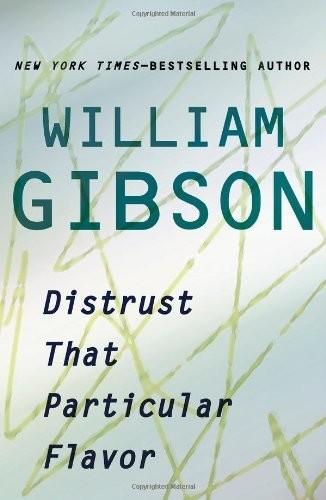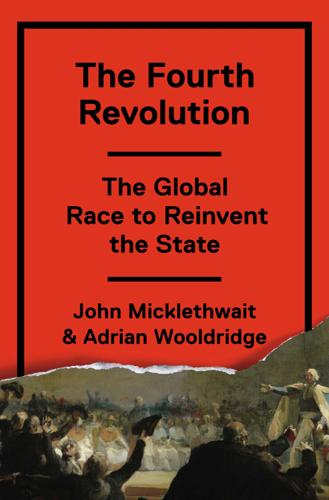Disneyland with the Death Penalty
description: article about Singapore by William Gibson
5 results

Distrust That Particular Flavor
by
William Gibson
Published 3 Jan 2012
Further, the publisher does not have any control over and does not assume any responsibility for author or third-party websites or their content. CONTENTS Introduction: African Thumb Piano Rocket Radio Since 1948 Any ’Mount of World The Baddest Dude on Earth Talk for Book Expo, New York Dead Man Sings Up the Line Disneyland with the Death Penalty Mr. Buk’s Window Shiny Balls of Mud: Hikaru Dorodango and Tokyu Hands An Invitation Metrophagy: The Art and Science of Digesting Great Cities Modern Boys and Mobile Girls My Obsession My Own Private Tokyo The Road to Oceania Skip Spence’s Jeans Terminal City Introduction: “The Body” The Net Is a Waste of Time Time Machine Cuba Will We Have Computer Chips in Our Heads?
…
There’s a certain white-shirted constraint, an absolute humorlessness in the way Singapore Ltd. operates; conformity here is the prime directive, and the fuzzier brands of creativity are in extremely short supply. The physical past here has almost entirely vanished. There is no slack in Singapore. Imagine an Asian version of Zurich operating as an offshore capsule at the foot of Malaysia; an affluent microcosm whose citizens inhabit something that feels like, well, Disneyland. Disneyland with the death penalty. But Disneyland wasn’t built atop an equally peculiar nineteenth-century theme park—something constructed to meet both the romantic longings and purely mercantile needs of the British Empire. Modern Singapore was: Bits of the Victorian construct, dressed in spanking-fresh paint, protrude at quaint angles from the white-flanked glitter of the neo-Gernsbackian metropolis.
…
Published here for the first time. “Dead Man Sings” copyright © 1998 by William Gibson. First published by Forbes ASAP magazine, November 30, 1998. “Up the Line” speech delivered at Directors Guild of America’s Digital Day, Los Angeles, May 17, 2003. Published here for the first time. “Disneyland with the Death Penalty” copyright © 1993 by William Gibson. First published by Wired magazine, January 2004. “Mr. Buk’s Window” copyright © 2001 by William Gibson. First published by www.williamgibsonbooks.com. “Shiny Balls of Mud: Hikaru Dorodango and Tokyu Hands” copyright © 2002 by William Gibson.

Supertall: How the World's Tallest Buildings Are Reshaping Our Cities and Our Lives
by
Stefan Al
Published 11 Apr 2022
For instance, some elevators have been outfitted with urine detection devices to detect urine’s scent, close the doors, and call the police. For its draconian penalties on offenses such as spitting and chewing gum, author William Gibson, no stranger to dystopian visions of the future, once described the city as “Disneyland with the Death penalty.” Nevertheless, as carbon emissions are heating up our atmosphere and urbanization is disrupting our natural system, Singapore remains a test bed for a more sustainable urban future—one centered around the greenest skyscrapers. SINGAPORE PROVIDES AN EXAMPLE of how cities and skyscrapers can coexist with nature.

The Fourth Revolution: The Global Race to Reinvent the State
by
John Micklethwait
and
Adrian Wooldridge
Published 14 May 2014
By the 1970s, as he explains in his memoirs, he had abandoned any illusion that socialism made sense: It was causing “the inevitable decline of the British economy.”3 By the 1990s he was reading Hayek’s The Fatal Conceit: Errors of Socialism and pursuing an “open-door policy” to international business, with a well-educated labor force, the rule of law, and low taxes. He went on to create one of the smallest governments in the world. It is easy to make fun of his creation. Singapore is Disneyland with the death penalty, paradise as designed by McKinsey, a supersized shopping mall where chewing gum is banned and litterbugs given a thrashing. For all his talk about “Asian values,” Lee was a pragmatic opportunist with sharp elbows. Opponents have been sent to prison and citizens treated like children.

The Hidden Globe: How Wealth Hacks the World
by
Atossa Araxia Abrahamian
Published 7 Oct 2024
Led by a Cambridge-educated lawyer named Lee Kuan Yew and armed with little but the flag on its back and a valuable location, the country redrew the lines between commerce and nationhood in the span of a generation and, the story goes, transformed it from a humble “fishing village” to a glittering metropolis. Visitors remark that Singapore feels like a country run by management consultants (a somewhat kinder take than the science fiction author William Gibson’s “Disneyland with the death penalty”). That’s deliberate. Lee’s innovation was to deploy the sovereign privilege of passing laws and building infrastructure—what we think of as public projects, with civics and the common good in mind—into economic development schemes to attract the wealthiest companies, people, and industries from abroad.

Cities Are Good for You: The Genius of the Metropolis
by
Leo Hollis
Published 31 Mar 2013
Despite a constitution modelled on the British parliamentary system, with frequent compulsory elections, it has had only one party in power since gaining self-governing status in 1959 and independence in 1963: Lee Kuan Yew’s People’s Action Party (PAP). Singapore has been called many things, from ‘Disneyland with the death penalty’10 to ‘one of the cleanest, safest, richest and dullest cities in the world’,11 but there is no question that, in its first fifty years, it became one of the great global cities of our times. This confused picture is reflected in Singapore’s standing within the many rankings that now catalogue the different faces of the world’s cities.